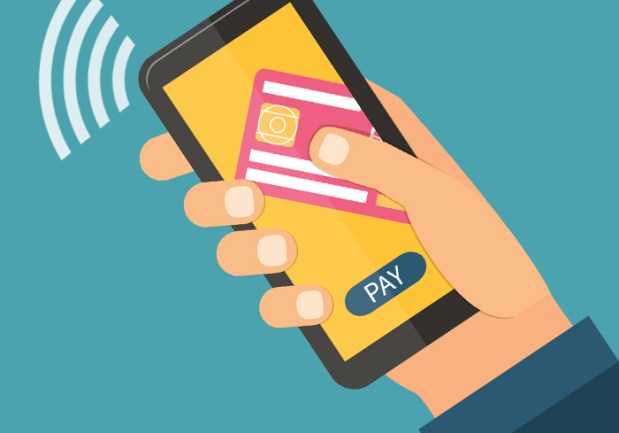Mobile Payments’ Trip To The European Mainstream

What’s it going to take for mobile payment technology to gain worldwide acceptance? According to Richard Brown, Executive Architect for Banking Innovation at IBM UK, and Morgan Beard, Strategic Marketing Director at TSYS, it’s already well on its way in Europe. How did that happen (and where will it go next)?
To find out the if, when and how of mainstream mobile commerce, one need look no further than Europe, where the practice is taking off. So says Richard Brown, Executive Architect for Banking Innovation at IBM UK, and Morgan Beard, Strategic Marketing Director at TSYS, who recently spoke with PYMNTS about the key factors that are driving mobile payments in the continent, how issuers are responding, and what the rest of the world can take away from that information.
What would you say are the key accelerators that will spur mobile payments’ growth worldwide?
MB: While there are many factors at play, there are really three key drivers.
First, the schemes are playing an aggressive role in developing the merchant side of the equation. The recent mandates that are going to increase the install base of NFC terminals will necessitate that MasterCard and Visa merchants must accept contactless payments. In contrast, by 2020, all terminals — new, upgraded and existing — will have to take contactless, as well. Naturally, the current penetration of POS terminals is varied throughout Europe; by 2020, there will be some ubiquity.
The second factor is the consumer’s appetite for and ability to use contactless payments. The average consumer increasingly holds a key component of the technology to enable contactless payments: the NFC radio in their smartphone. A lot of the new releases tend to have it, as well. Critical mass is approaching, and that’s coupled with an increased appetite for contactless payments in general. The London Public Transport System provides a striking example of that: In March, the number of contactless taps made on the tube in a single day reached the magic 1 million threshold…and that was only six months after the program’s September 2014 launch.
The third real positive indicator is that we’re starting to find meaningful inroads from alternative mobile payments programs. There are 50 or so commercial pilot services in the market today. In Sweden, Klarna is doing some exciting things, letting customers buy things online using only their email addresses and postcodes; in France, Orange and Visa teamed up recently to launch a prepaid card loaded onto the SIM card…there are myriad examples. They illustrate a commonality: For mobile payments to reach critical mass, both the consumers and the merchants need access to a simple and rather frictionless solution.
Apple Pay is of course a recent entree; the bar, I think, is going to be raised much further. But the conditions are ripe in the market — there is a consumer appetite and a merchant readiness. I would say that 2016 is probably going to be the year that mobile payments finally hit the mainstream in Europe.
How is the market going to evolve differently between the in-store and in-app solutions?
RB: While the in-store m-payment ecosystem is rapidly crystallizing in the way that Morgan describes, it could well be that the largest area of future growth may be with in-app purchases — either purchases made online using a mobile phone or tablet, or payments made in a store but using a mobile device to complete the purchase.
This is important because, as Morgan says, European consumers have shown themselves to be quite open to the idea of using non-card or nontraditional mechanisms of payment. Along with Klarna, there’s also Trustly in Sweden that’s a good example of alternative payments, issued through either mail-order or eCommerce domains. In the U.K., we’re soon to see the launch of ZEP, which is backed by pretty solid market research that suggests consumers will be quite comfortable paying directly from their banking apps in-store.
I see the growing usage of these alternative solutions as reflective of a population that’s increasingly comfortable buying online and through nontraditional means. It’s likely, therefore, that people will increasingly use mobile devices for payments, for both in-app and in-store purchases.
It should be said that mobile commerce is already quite strong in Europe. Recent figures from the Center for Retail Research showed that Europeans will spend about €45 billion via mobile devices in 2015, which is an almost 90 percent increase from the previous year. As always with these kinds of stats, the telltale sign that a base that seems high is actually quite small is a surprisingly large percentage of growth — which means that there is room to grow further.
We can already see a clear trend in mobile apps that give cardholders the ability to pay in-app; they’re proliferating. Everybody’s familiar with Uber, which allows you to store a card on file so you can simply leave the cab at the end of your ride and the payment is taken automatically. There are other in-app payment models catching on in restaurants — Flypay is a good example in the U.K.: It allows diners to settle a tab without having to call over the waiter for the check.
When you consider all of these elements together, you gain two interesting insights: The first is that as services such as Apple Pay and Android Pay begin to roll out, and maybe dominate, we might expect to see a move away from individual apps (such as Uber or Flypay) storing payment card details inside themselves and toward using the card registered on the device. That could well have implications for the issuers’ top-of-wallet strategies, putting their focus in that regard on the device rather than the apps.
Finally, and perhaps more disruptively, we could begin to see more and more retailers begin to consider the question of convergence, asking themselves how they can bridge between a world of point-of-sale devices and NFC readers and a world where the consumer expects to pay within their app.
What actions should issuers take to thrive?
RB: There’s three things they can consider.
Firstly, determine the best route to offering a mobile wallet that allows the issuers’ cards to be made available to their customers. Given the trend we’ve discussed of the move toward mobile commerce and the rise of in-app purchases, issuers will need to evaluate which wallets they should support from their myriad options, if they believe that’s going to be material — particularly on Android. It’s critical to understand how clear of a roadmap exists from wallet providers to the issuer’s own mobile payment strategies and beliefs related to alternative mechanisms.
Not directly related to the mobile device but quite instructive is perhaps what Barclays is doing with its bPay offering. They’re clearly positioned at the intersection of two emerging payments trends: contactless payments and wearable technology. They may or may not be right about whether that’s the right thing to do, but it seems clear they’ve formed a strategic view and are executing against it. The lesson to other issuers — to the extent that they’re not already doing so — is to be thinking about what they should be doing in these spaces.
The most obvious question in this space, by the way, is: To what extent do you believe in-app and mobile commerce scenarios will begin to become material and even dominate over time? Because that will determine which wallet model — issuer-specific, MNO-provided, Android Pay, for example — is most appropriate to support. And it very well may be a combination.
Secondly, it seems clear that issuers need to develop a strategy for their cards to become top-of-wallet. Although many of these wallets seem to be controlled by the platform providers or the telecoms, there’s still the opportunity for issuers to consider their strategies for how their card becomes the default. Right now, mobile card users can specify a different default for different apps. As we move toward a default card for the phone, it becomes ever more important to issuers.
Finally, there’s the opportunity to increase usage of particular cards. An issuer can drive usage of its own card by integrating personalized offers and incentives; there’s still room for creativity and innovation in that space. Once European issuers have started building strategies for achieving that coveted “default placement” within in an app, it’s important that they take steps to encourage usage — responsible usage, of course, but to encourage usage nonetheless.
Incentives might be quite simple, such as giving cardholders access to their available credit or account balance at the time of spend, or offering applicable promotions at the point of payment. But you could go further; programs could be developed that encourage consumers to use their card regularly for particular in-app purchases, which could drive up usage.
Or issuers could look for specific country or market drivers that they could latch onto. Morgan mentioned earlier that one of the key drivers of NFC adoption in the U.K. — in London, in particular — is the London tube system. But of course what’s not obvious to everybody is you have to use the same card to touch-in and touch-out. Whichever card becomes the default in a consumer’s mind for the tube, purely for sheer convenience, is likely to very quickly become their default overall.
Where can readers get more information on this topic?
MB: We’ve put together a white paper on the topic, and we get into some greater details and delve into a bit more specificity about the HC and secure element debate, as well as tokenization.
To download the whitepaper please click the below button.

Morgan Beard
Director of Strategic Marketing for TSYS International
Morgan Beard is Director of Strategic Marketing for TSYS International. In his current role, he focuses on identifying new markets and solutions for clients with TSYS’ international business. In his tenure at TSYS, Beard has held a variety of previous roles in product marketing, where he was responsible for delivering product launches and thought leadership efforts. Prior to joining TSYS in 2008, he spent 15 years in sales and marketing positions in the U.S. and Latin America, with experience ranging from Fortune 500 companies to startups. Beard holds a degree in Spanish and economics from St. Lawrence University, as well as an International MBA from the University of South Carolina. He can be contacted at mbeard@tsys.com or www.twitter.com/morgan_beard.

Richard Brown
Executive Architect for Banking and Financial Markets Industry Innovation at IBM UK
Richard Brown is Executive Architect for Banking and Financial Markets industry innovation at IBM UK. He is IBM’s leading authority on cryptocurrencies and alternative payment schemes and maintains a widely-read blog on the topic (http://gendal.me). His previous roles with the company, for whom he has worked for almost 15 years, include Lead Account Architect for a global Investment Banking client and a consultant for IBM software products. He is an advisor to several FinTech startups and he mentors at London’s Startup Bootcamp accelerator. He is a Chartered Engineer, holds an MBA from Warwick Business School and a first-class degree in Mathematics from Trinity College, Cambridge.

